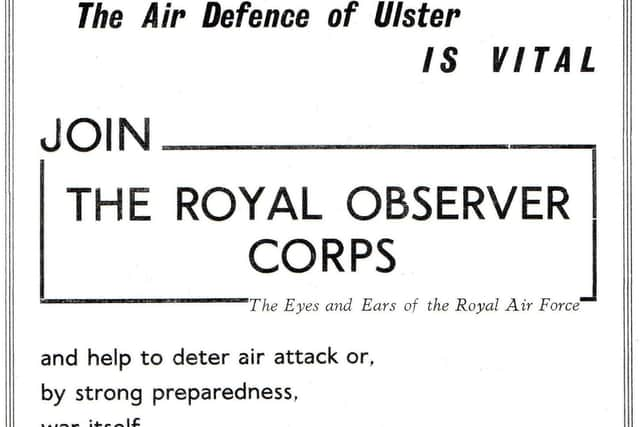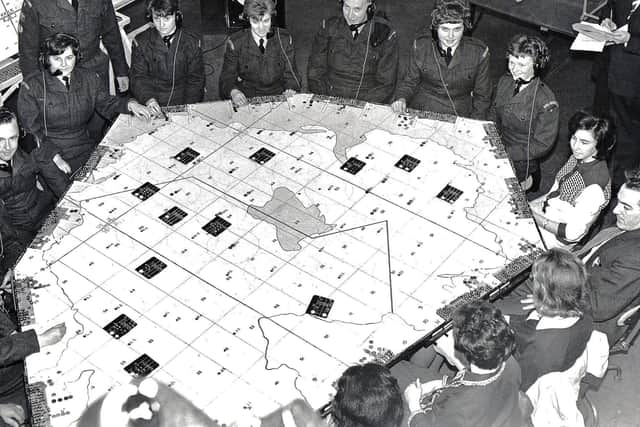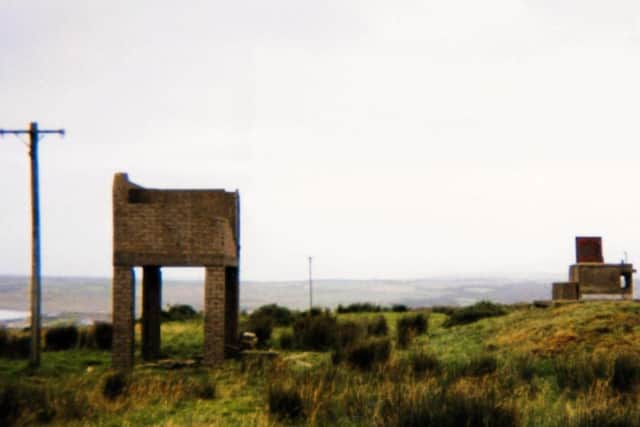Roamer: Local eyes and ears on Soviet planes during the Cold War
and live on Freeview channel 276
Few know that the ROC operated in Northern Ireland, but a written history of its activities here awaits printing, if there’s enough local interest.
Journalist, author, local historian and former editor of the Coleraine Chronicle, Hugh McGrattan, was an ROC member for 34 years. He now recounts a little of the organisation’s proud history in Ulster, which began 70 years ago when the UK faced a strategic threat - hostile incursions by warplanes of the Soviet Union. When Soviet missions started coming from the west as well as the east, Britain’s defence system, previously concentrated on the east, was extended westwards.
Advertisement
Hide AdAdvertisement
Hide AdSo the area covered by the ROC - famously known as ‘the Eyes and Ears of the RAF’ - was broadened to include Northern Ireland.


This wasn’t easy in 1954, when the ROC was already transitioning into a Cold War ‘field force’ for the United Kingdom Warning and Monitoring Organisation.
This nuclear war role, with improved procedures and communications, was a complicated process and to include Northern Ireland involved the creation of a new ROC unit...No. 31 Group.
Some say that initial discussions about forming the new unit were held during an Ireland-England rugby match in Dublin, attended by senior RAF officers and leading figures from the Northern Ireland community. The truth of that story isn’t known (nor is the result of the match!) but two senior ROC Staff Officers arrived here for an initial survey.
Advertisement
Hide AdAdvertisement
Hide AdThey recommended the creation of an operations room in Belfast’s Orangefield area, which remained the hub of ROC operations here for the next five years.


Observation posts were to be constructed on 58 carefully surveyed sites. In addition to surface lookouts, these would be provided with accommodation 15 feet underground to protect the occupants from nuclear fallout. There, a crew of three would carry out the tasks of locating, assessing and measuring nuclear explosions and the resulting radiation.
Two full-time officers and a small staff of civil servants were to oversee the daily running of 31 Group, eventually from a purpose-built Headquarters and Group Control at Lisburn.
The first member enrolled in No 31 Group was 80001 Observer Albert McCurdy, appropriately ex-RAF and later to become an ROC officer.
Advertisement
Hide AdAdvertisement
Hide AdThe second enrolment was 80002 Observer R. N. McCleane, who became Ulster’s first ‘Post Observer’ on N3 Post at Dundrod.


Many of these early enrolments were ex-RAF, including two chaplains - Presbyterian and Church of Ireland.
Spare-time officers were appointed to take charge of posts and operations rooms; thus was the volunteer status of the Corps maintained.
RAF-style uniforms were issued, but with a black beret - chosen, it was thought, because blue berets were in short supply but there was a glut of black Tank Corps berets.
Advertisement
Hide AdAdvertisement
Hide AdThe first Group Commandant, a spare-time appointment, was Brigadier R.J.C. Broadhurst, a well-known military historian but (as he himself admitted) with little knowledge of the ROC or its work. On Sunday November 14 1954, 31 Group assembled a turnout of nearly 200 personnel at RAF Aldergrove. A score of aircraft on display included Sabre jet fighters.
Formally established the previous April, the ROC continued operating until the Soviet Union collapsed 40 years later. In Northern Ireland many hundreds of local men and women became members of the Corps. Some served for short periods only. Others remained members for years, some as officers. Many qualified for the ROC Long Service Medal.
Today, Northern Ireland’s Cold War volunteers are all but forgotten, but there are reminders. The remnants of observation posts for aircraft spotters can still be found in the corners of fields or on windswept hillsides.
Less evident are the abandoned underground ‘monitoring posts’ that were once equipped with instruments to detect nuclear bursts and radioactive fallout should the province ever be attacked.
Advertisement
Hide AdAdvertisement
Hide AdMore obvious reminders include a fully-equipped, underground post re-created on the original Portadown site and a magnificent stained-glass window in Eglantine Parish Church, Lisburn, presented by members of 31 Group in memory of airmen killed in World War Two.
The 31 Group banner hangs in safe-keeping on a nearby wall of the church. There is also a flourishing branch of the ROC Association with a membership that still incudes many former members of the Corps.